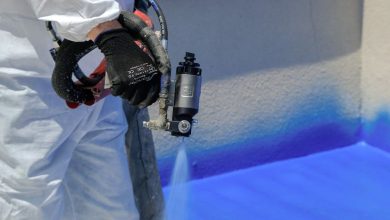How Do I Maintain My Home’s Exterior Paint?

Maintaining the exterior paint of your home is crucial for both its aesthetic appeal and protection against the elements. Over time, weather conditions and general wear and tear can cause the paint to fade, crack, or peel. To keep your home looking fresh and well-maintained, here are some essential tips to help you maintain your home’s exterior paint.
Inspect for Damage Regularly
Regular inspection is the first step in maintaining your home’s exterior paint. Walk around your home and carefully examine the paint for any signs of damage such as peeling, cracking, or discoloration. Pay close attention to areas that are more exposed to the elements, such as the south-facing walls. If you notice any issues, take note of them and make a plan to address them promptly.
Clean the Surface
Before applying any paint touch-ups or repainting, it is important to clean the surface thoroughly. This will remove dirt, dust, mildew, and other contaminants that can affect the adhesion and longevity of the paint. Use a power washer or a garden hose with a high-pressure nozzle to remove dirt and debris. For areas with stubborn stains or mildew, use a mild detergent or a specialized cleaner. Scrub the surface gently with a soft-bristle brush, and rinse thoroughly to ensure a clean and smooth surface.
Repair and Prepare
Once the surface is clean and dry, it’s time to repair any damaged areas and prepare the surface for painting. Start by scraping off any loose or peeling paint using a paint scraper. Smooth out rough edges with sandpaper, and fill in any cracks or holes with an appropriate filler. After the repairs are complete, sand the patched areas to create a smooth and even surface. Be sure to remove any dust or debris before proceeding to the next step.
Prime the Surface
Priming is an essential step in maintaining your home’s exterior paint. Applying a coat of primer before painting not only improves adhesion but also helps seal the surface, preventing moisture from reaching the underlying layers of paint. Choose a primer that is compatible with your paint type and carefully apply it to the prepared surface. Use a brush or a roller to ensure even coverage, and allow the primer to dry completely before moving on to the next stage.
Apply the Paint
Now that the surface is clean, repaired, and primed, it’s time to apply the paint. Select a high-quality exterior paint that is suitable for your home’s exterior material, such as wood, stucco, or brick. Consider the climate and weather conditions in your area when choosing the paint, as certain types are more resistant to fading, cracking, and mildew. Use a brush or a roller to apply the paint evenly, following the manufacturer’s instructions for drying and recoating times. Apply multiple thin coats rather than one thick coat for better results and durability.
Maintain and Protect
To prolong the life of your home’s exterior paint, it is important to maintain and protect it regularly. Clean the surface periodically to remove dirt, pollen, and other debris that can accumulate over time. Avoid using harsh chemicals or abrasive cleaners that can damage the paint. Instead, use a mild detergent and a soft brush or cloth to gently clean the surface. Inspect the paint annually for any signs of damage or wear, and address any issues promptly to prevent further deterioration.
Conclusion
Maintaining your home’s exterior paint is essential for preserving its curb appeal and protecting it from the elements. Regular inspection, cleaning, repairs, priming, and proper paint application are key steps to ensure the longevity and beauty of your home’s exterior paint. By following these tips and staying proactive in your maintenance efforts, you can enjoy a well-maintained home that stands out in the neighborhood for years to come.




